
Midway between the raw volcanism of the Big Island, and the lush jungle of Oahu

The island of Maui is only around half the age of O’ahu at around 1.5 million years, and is consequently more arable with less dense rainforest, in contrast to the Big Island which has mostly not had time to form a topsoil yet. Maui is formed from two volcanoes, Pu’u Kukui in the west which is fringed with hotels and resorts, and the much larger and potentially still active Haleakala in the east, with an interconnecting isthmus.
Maui was my second trip to the Hawaiian islands from Alaska, we spent a week based in Ka’anapali in the far west just north of Lahaina, from which we explored the whole island. It felt much more chilled out than the frenzy of Oahu, but still has plenty of bars and restaurants, my favourite of which was Mama’s Fish House near Paia.
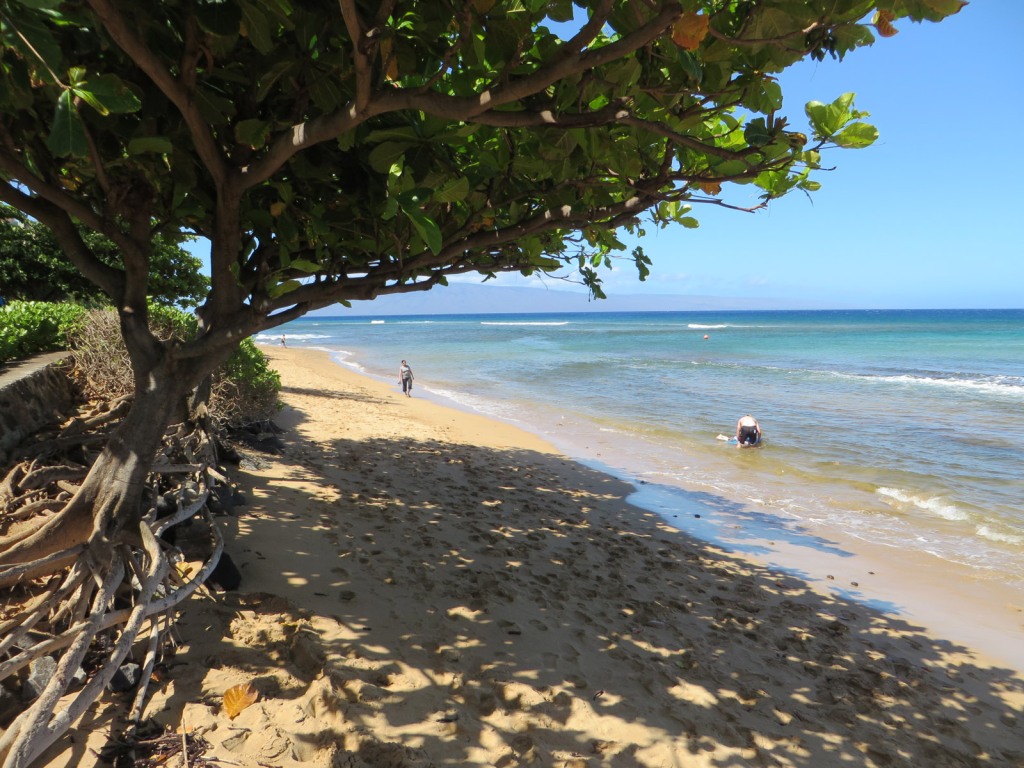
Ka’anapali Beach, right outside our hotel, and walkable in both directions to the neighbouring resorts. We were in the Aston Kaanapali Shores which has two pools, and excellent scuba diving on the doorstep.
Gardens such as these in our hotel in Ka’anapali are beautifully laid out.

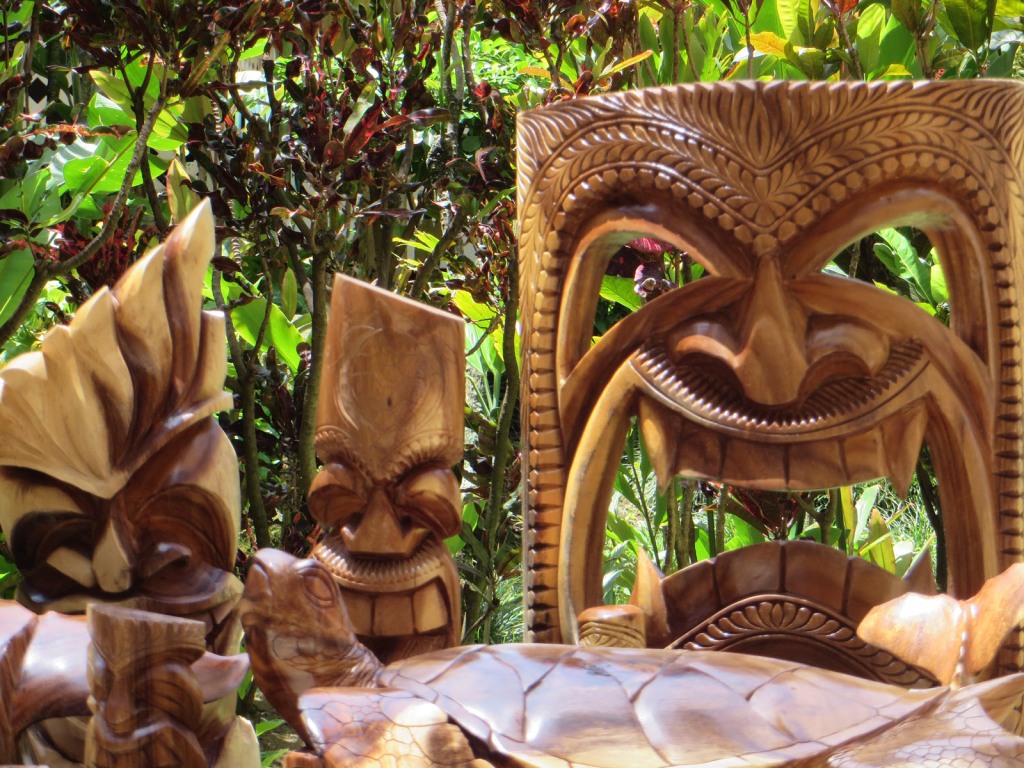
Polynesian masks for sale in the hotel grounds. The indigenous Hawaiians were independent from the west until the arrival of Whitby’s own Captain Cook in 1778. The Kingdom of Hawaii persisted until being overthrown by European and American residents in the late 19th century. It wasn’t until nearly one hundred years later that the US acknowledged that the annexation of Hawaii had been unlawful.
Lahaina was the nearest town down the coast from our hotel, and we spent a pleasant afternoon wandering amongst the shops and by the marina. Dinner at a seafood restaurant overhanging the water was superb.

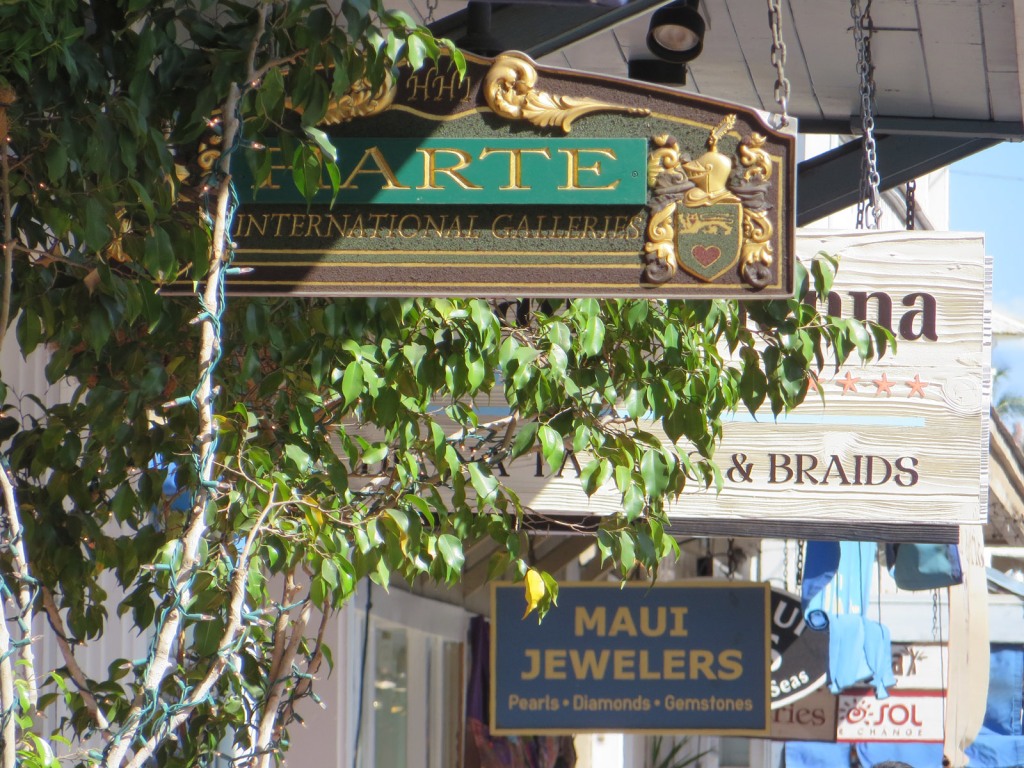
Example of the local posh shops around Lahaina – it’s not really a backpacker destination!
Front Street, Lahaina, buzzing with shops and restaurants. Mick Fleetwood has his own dining establishment here, although we elected to dine at one of his competitors.

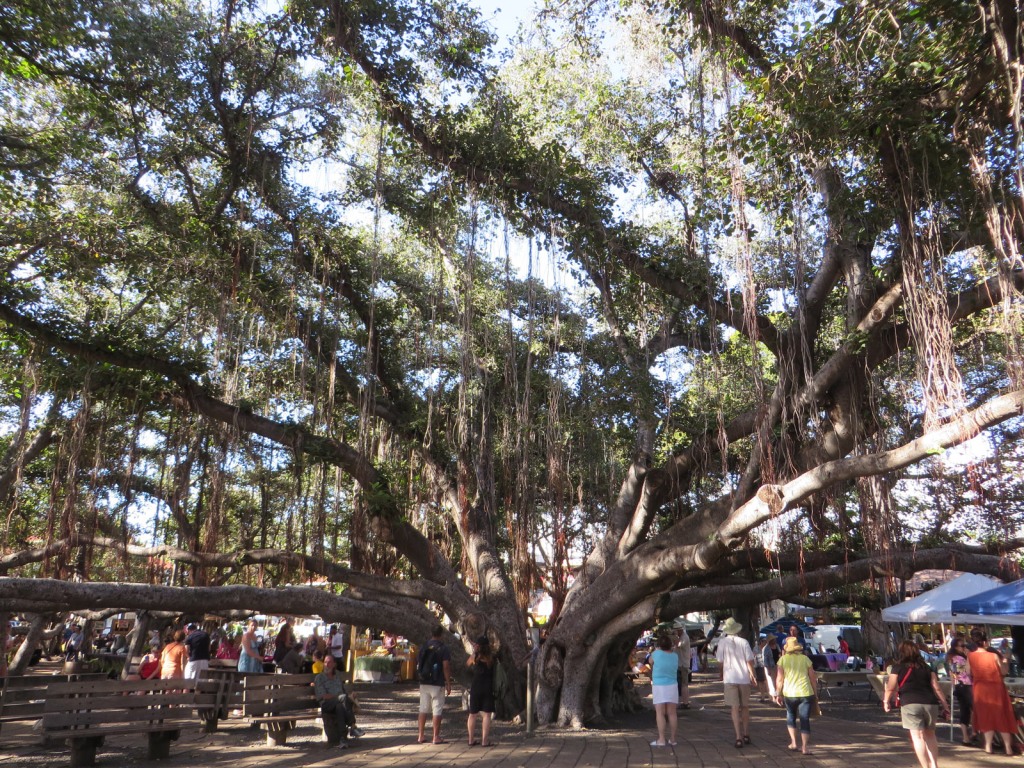
The centre of Lahaina is dominated by an enormous banyan tree, which has been growing since 1873, and has reportedly survived the devastating fire of 2023.
Dining establishments overlooking the Pacific, we were spoiled for choice and I wish I could remember the name of the place we went to!


Maui is well known for its coffee, such as that sold here at the Pioneer Mill Company. The mill itself produced sugar back in the day, and even had its own narrow gauge railway, not unlike that of Fiji.
The Iao Needle rises over a thousand feet above the Iao Valley, itself a deep crevasse in the eastern slope of Pu’u Kukui. The area is a dense rainforest and one of the wettest places in the state, with nearly ten metres of rainfall recorded annually.


Heading over to the east of Maui we found ourselves in the pretty town of Paia a few times. Full of cute little shops and cafes, we also had an evening at perhaps the best restaurant on the island, Mama’s Fish House.
Holy Rosary Church on the outskirts of Paia, we stopped for a little look around.
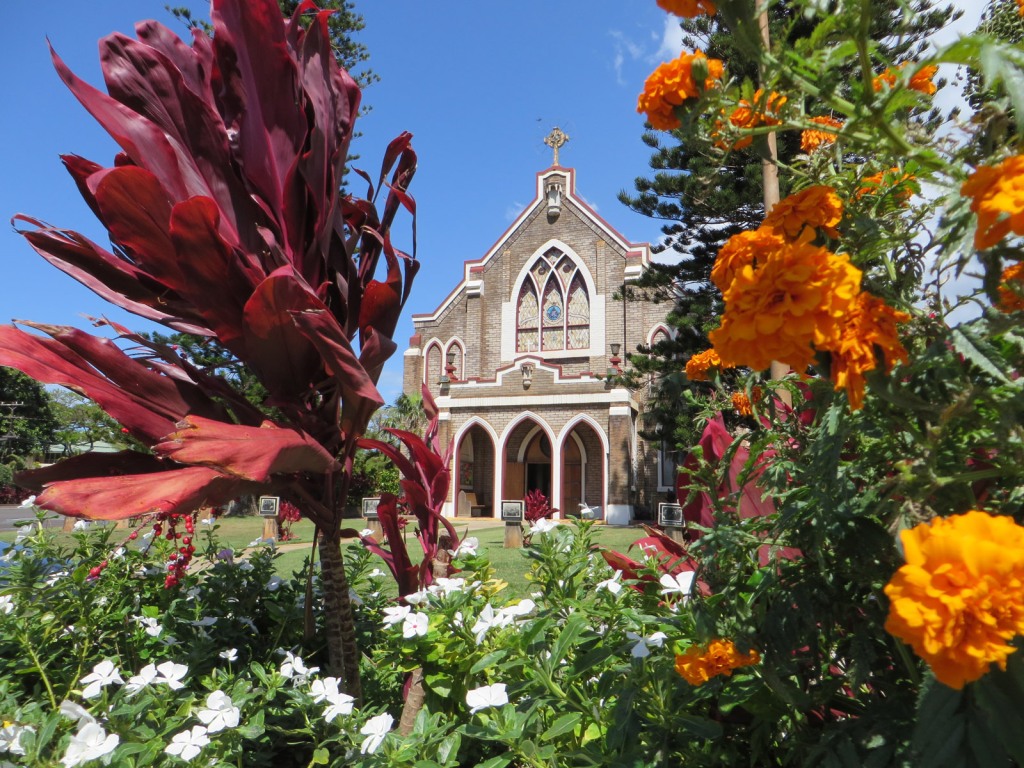

Also near Paia and looking more akin to somewhere in Nepal, is the Maui Dharma Center. As you might expect, it is indeed a place for the study of Tibetan Buddhism, and was even visited by the Dalai Lama in 2007.
One of Maui’s top attractions is the scenic drive along the road to Hana, the Hana Highway. It snakes around the north shore of the island, often cut into the cliffside, and is navigated by distracted tourists.


One of several waterfalls we encountered along the Hana Highway.
Along the route we stopped on the site of one of Maui’s recent lava flows, forbidding jagged chunks being pummelled by the Pacific. The most recent eruption of Haleakala was around five hundred years ago.


Ever up for exploration, we hopped into a nearby lava tube. This one was somewhat less gentrified than on the Big Island, and we relied on torches to find our way as far down as possible in the gloom. Note the lava flow tide marks on the walls.
The Hana Highway is barely discernible in this shot, but hugs the cliff above the black sands. The road has been much improved in recent years and is no problem full circle in a rental car

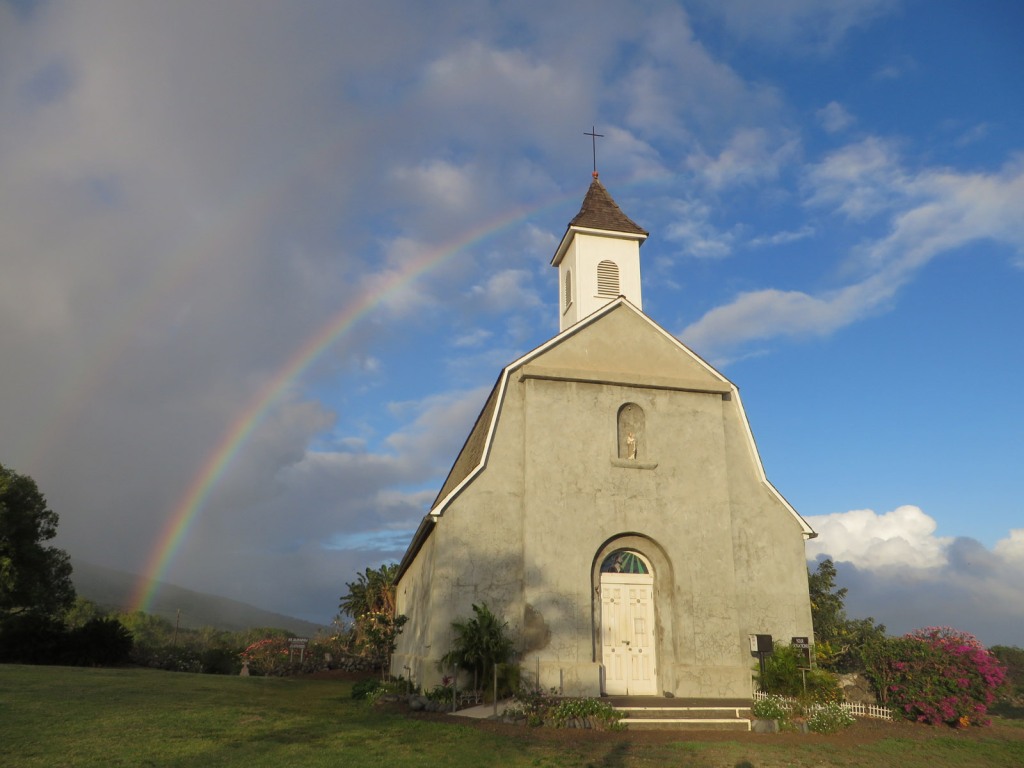
A rainbow frames Saint Joseph Church on the south side of the island. By this stage we were long past Hana itself, and more or less had the road to ourselves.
The slopes of Mount Haleakala are beginning to be eroded, but have a long way to go before being cut down on the scale of Oahu. Here at Manawainui Gulch it’s clear from the road design that they’re expecting plenty more erosion in the shot term.


There is a public road to the very summit of Haleakala, which at 10,023 feet (3,055 metres) is well high enough to feel the effects of altitude. I shouldn’t have been surprised at how cold it was, but coming from the subtropical coast to an alpine summit in less than an hour was a definite shock to the system.
Back down at warm sea level, we took a boat trip out to Molokini Crater, a mostly submerged volcanic cone and excellent snorkelling site. As there is no nearby sand, the water is very clear and there were plenty of fish around the reef within the sheltered crater.
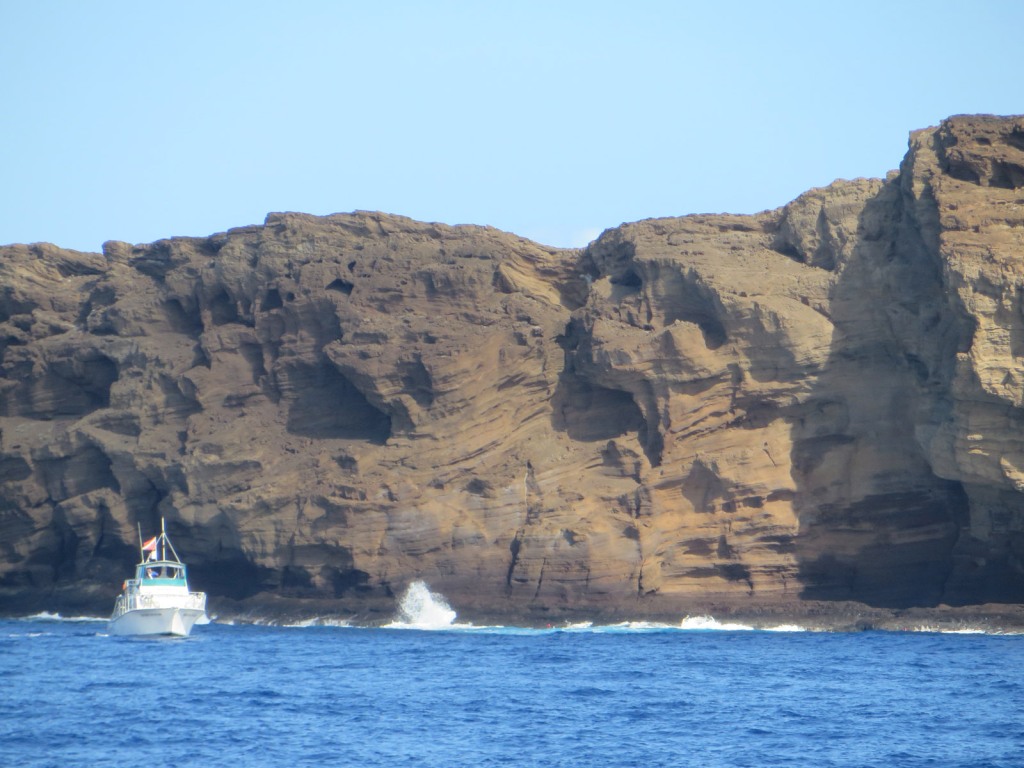
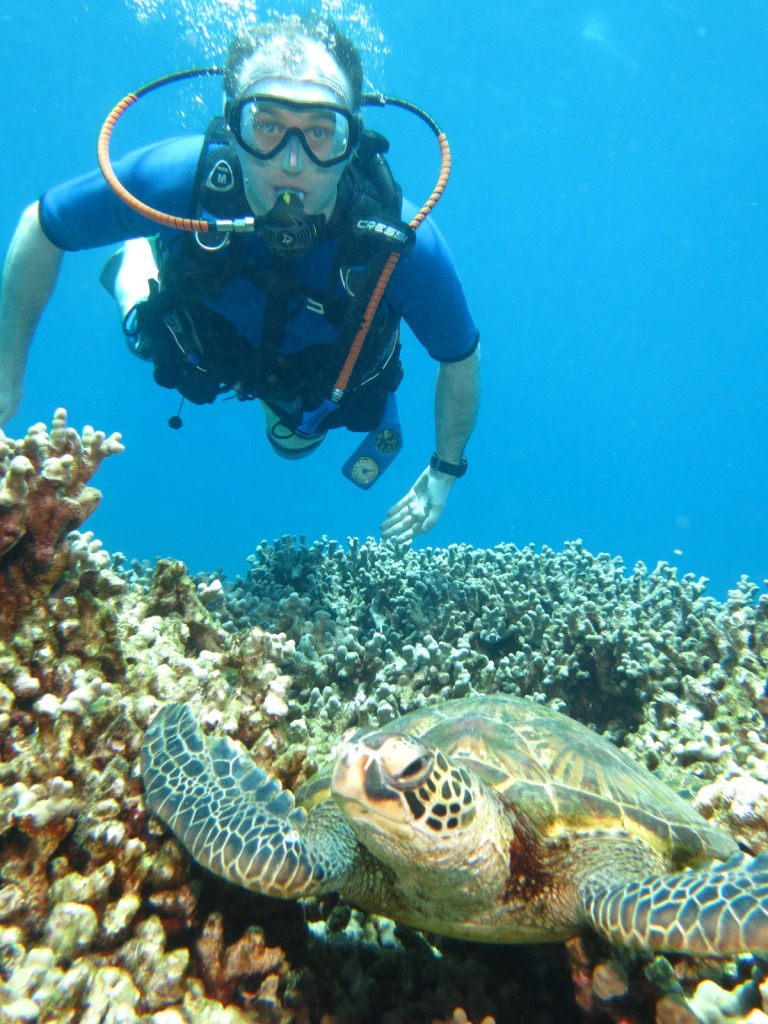
I also tried out scuba diving in the ocean right off the beach at our hotel. For years I had wanted to scuba dive, and finally the opportunity came up for a starter course. I was surprised at how quickly we were let loose in the Pacific. This turtle doesn’t look pleased to see me.
Hawaii has taken the craft brewing trend to heart, with the Maui Brewing Company producing delicious ales in Kihei. They also offer brewery tours, which we were only too pleased to join.


Back in Lahaina and the sunset view with tiki torches from an overwater restaurant terrace – perfect.
Created 2015 | Updated 2023
